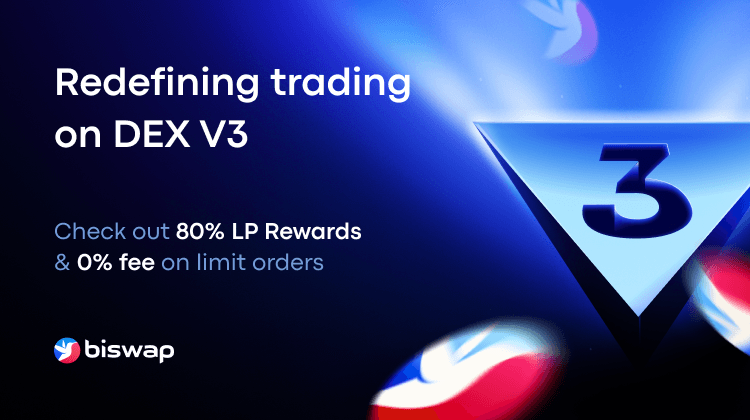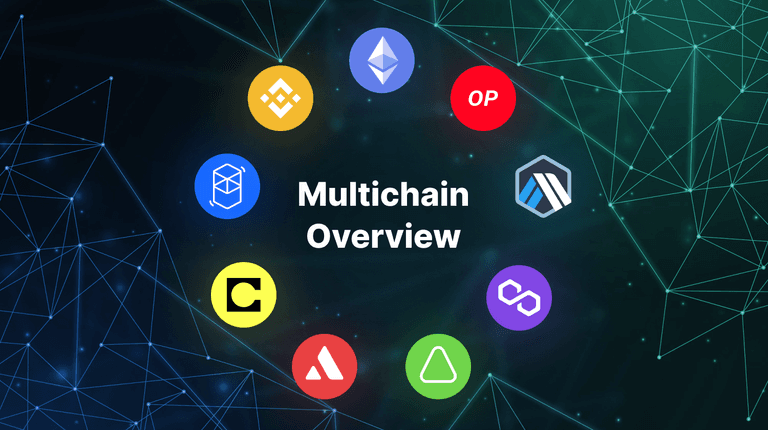BNB Chain
Explore tokens on the BNB Chain, a fast, scalable, and low-cost blockchain created by Binance which hosts a range of popular meme coins.
All You Need to Know About BNB Chain
BNB chain is a public blockchain that was launched by Binance, the largest centralized cryptocurrency exchange (CEX) in the world. Binance Chain is designed to provide a high-performance infrastructure for decentralized applications (dApps) and has a strong focus on supporting the trading of digital assets. The BNB chain itself was created by the combination of the original Binance chain and the EVM-compatible Binance Smart Chain (BSC). Although Binance is the creator of the BNB chain, they aim for it to work as an independent and decentralized unit.
A Brief History of the BNB Chain
In 2019, the leading centralized cryptocurrency exchange Binance launched its own L1 chain called simply Binance Chain. It provided a new native token standard BEP-2 and was powered by their previously issued BNB coin. The original use case of BNB coin was to offer its holders reduced fees on the Binance CEX while being deployed on the Ethereum network as an ERC-20 token.
In 2020 The first Binance Chain was expanded with the addition of a new Ethereum-derived chain called the Binance Smart Chain (BSC). This chain allowed developers to easily transfer Ethereum dApps onto the new Binance Smart Chain, which offered high speed and very low fees. That was part of the reason, why later on the BSC evolved into a chain mainly used by GameFi, NFT, and Meme projects. Two years later the original Binance chain and BSC were merged and rebranded as the current BNB chain. The original chain now serves for governance and staking, while the Smart chain is more of an application layer.
Key Concepts of the BNB Chain
System of Sub Chains
The BNB Chain is not just one blockchain. It is composed of many parts, with each part serving a particular purpose. The two main branches we have already mentioned, are the Binance Beacon Chain and Binance Smart Chain (BSC). Newer additions to the system include the zero-knowledge rollup chain ZkBNB and a decentralized storage infrastructure chain called BNB Greenfield.
|
Sub Chain |
Use case and properties |
|
Binance Beacon Chain |
Derived from the first Binance chain, now serving as a base layer of the ecosystem for staking and governance. |
|
Binance Smart Chain (BSC) |
EVM-compatible chain used for deployment of smart contracts and dApps. Interoperable with other EVM-based chains. |
|
ZkBNB |
Zero-knowledge rollup used for scaling and deployment of large applications with high speed and low fees. Read more in our Zk-rollup post. |
|
BNB Greenfield |
Decentralized storage-oriented blockchain system. Will be used to store big amounts of data on a network of decentralized nodes. |
EVM compatibility
EVM (Ethereum Virtual Machine) compatibility refers to the ability of a blockchain to execute smart contracts written in the Solidity programming language, which is the language used for writing smart contracts on the Ethereum blockchain. The BNB chain is EVM-compatible, meaning that developers can easily port their Ethereum-based decentralized applications (dApps) to the BNB chain. This provides a seamless transition for developers and users to migrate to BNB from Ethereum and expands the potential use cases of both.
- Ability to execute code and dApps written for Ethereum
- Developers may transition their projects easily
- Improves interoperability among both chains
EVM compatibility also enhances interoperability between different blockchain networks, enabling cross-chain compatibility and facilitates the creation of new decentralized applications that can work across multiple blockchains.
BNB Coin
BNB is the native cryptocurrency of the BNB chain ecosystem. It is used by validators to secure the network and by users to pay transaction fees on the BNB chain. On the Binance CEX, the BNB coin can be used to pay trading fees at a reduced rate, compared to other cryptocurrencies.
At this time, the BNB coin is a BEP-2 and BEP-20 token native to the BNB network with a broad range of applications. Binance has introduced the periodical auto-burn feature, where they burn a larger amount of BNB roughly every quarter. This burning should supposedly increase the price, granted the demand stays the same. BNB has a total maximum supply of 200 million BNB, but through the auto-burn feature, the desired total supply should eventually end up at 100 million BNB.
Token supply is allocated in the following way:
- 50 % of the supply (100 M) was sold in the 2017 ICO with roughly $0.15 per token
- 40 % of the supply (80 M) was given to the founding team with unlock schedule over 4 years
- 10 % of the supply (20 M) was distributed to early investors
The BNB Chain offers staking rewards for those who delegate their BNB tokens to validators. The current rate of return is around 8 %, with a lock-up period of 7 days before tokens and accrued rewards can be withdrawn. During the unstaking period, no rewards are accrued. Delegator rewards are derived from gas fees generated on the BNB network and are distributed to the Active Validator Set. Validators then distribute these rewards among their delegators.
The Consensus
BNB chain uses Proof-of-Staked-Authority (PoSA) consensus algorithm, which combines Proof-of-Stake and Proof-of-Authority. Validators on BSC stake BNB and receive transaction fees as rewards when they propose a valid block. There are 21 active validators, who take turns validating blocks based on their BNB holdings. This allows for shorter block times and lower costs, but the low number of validators leads to centralization and decreased security. Users cannot simply start validating BSC transactions on their own same as they would on PoS chains.
Governance
For the purposes of Governance, the Binance Beacon Chain is used. Being a validator is the only way how to gain governance rights in the BNB ecosystem. Validators create proposals for changes in the system, such as fees, network parameters, software upgrades, and so on. Other validators vote on these proposals with voting power being determined by the amount of their BNB stake. Due to the concentrated validator set, the BNB chain governance is more prone to centralization than other chains.
FAQs
How to swap BNB to smart chain?
Probably the easiest way to bridge between the Binance beacon chain and BSC is to use TrustWallet. Deposit your BNB either from CEX or a different crypto wallet into your TrustWallet and from there you will have the possibility to swap between these chains. Select BNB in the TrustWallet and select the Swap function.
Is BNB the same as Ethereum?
The BNB and Ethereum are different blockchains. Although there are certain similarities, as the BSC component of the BNB chain is derived from Ethereum and therefore EVM-compatible. You can find copies of many dApps from the Ethereum ecosystem on the BNB chain and you can even use the same wallet, just with different chains added (Metamask).
Is BNB smart chain the same as the BNB chain?
BNB chain is the umbrella term for an ecosystem of several chains. One part of this ecosystem is the Binance smart chain (BSC), which is EVM-compatible and used for the deployment of smart contracts and dApps. The original Binance chain is now called the Binance Beacon chain and is used for governance and staking.
Is BEP20 and BSC the same?
BEP20 is a token standard - basically a set of rules saying how the token will behave on a certain network. The BEP20 standard is used by the Binance Smart Chain (BSC) - the EVM-compatible chain and the BEP2 is used by Binance Beacon Chain, which is the original L1 Binance blockchain.
How do I add Binance chain to Metamask?
Metamask supports only EVM-compatible chains. Those are chains derived from the Solidity programming language. You can add only BNB Smart Chain (BSC) to Metamask. To do so, open your Metamask wallet and expand the network button in the top right corner. From there, you should see a button saying "Add Network". When you click on that button, Metamask will show you some popular networks to add, including the BNB chain.



